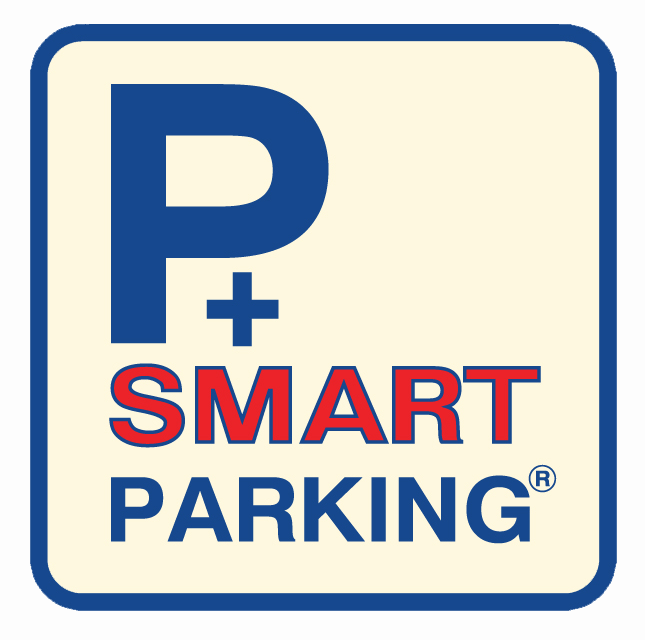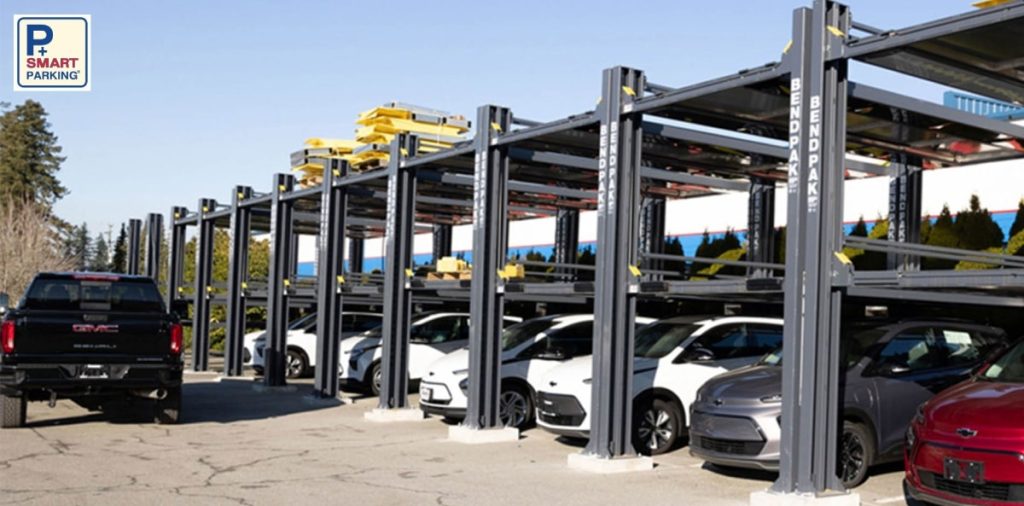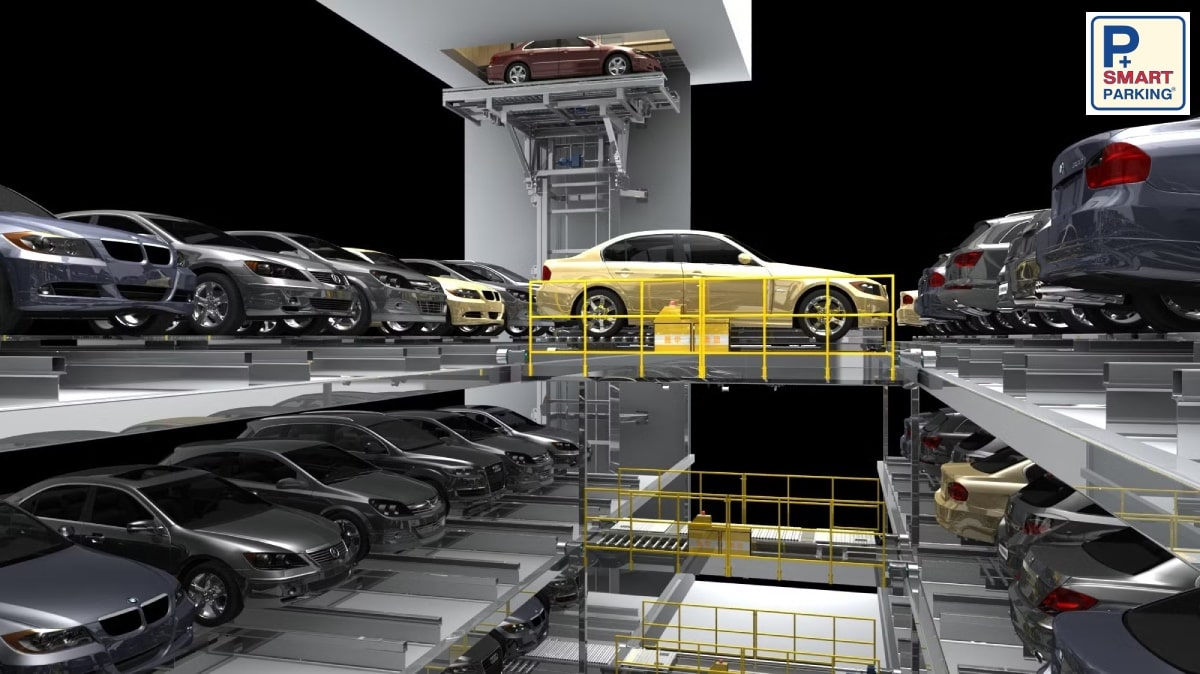As city populations continue to grow and car ownership increases, parking space has become a major challenge in cities across the world. Traditional parking garages just are not able to keep pace with increasing vehicle ownership, resulting in congestion, annoyance, and time wastage. Say hello to the parking stacker—a cutting-edge invention that maximizes parking efficiency and space utilization.
What is a Parking Stacker?
A parking stacker is a mechanical automobile stacking system for vertically stacking cars in a multi-story arrangement. The system is particularly suitable where land is limited but parking is needed in large quantities. By going vertical, parking stackers can potentially park more cars in the same area.
How Does a Parking Stacker System Work?
A parking stacker system operates on a series of platforms and lifts that transport vehicles to their respective parking spots. The vehicles are positioned on raiseable or lowerable platforms in a manner that more than one vehicle occupies the same horizontal space.
Here is a basic explanation of the operation of a typical parking stacker system:
1. Vehicle Entry:
The vehicle is driven into the entrance of the stacker system.
2. Platform Positioning:
The car is led to a vacant parking space by the machine and places a platform there accordingly.
3. Lifting Mechanism:
A lifting mechanism on the platform lifts or lowers the car to pile it on the desired level.
4. Vehicle Retrieval:
On retrieval by the owner, the machine retrieves the car through the reverse process.
Advantages of Installing a Parking Stacker
Installation of the parking stackers has several benefits. Some of the most significant ones are as follows:
| Benefit | Description |
| Space Efficiency | By utilizing vertical space, a parking stacker can boost parking capacity by as much as 60%. |
| Less Land Used | Parking stackers use less land surface area than traditional car parks, making them suitable for city areas. |
| Improved Security | Vehicles are kept within an enclosed space, minimizing the risk of theft and vandalism. |
| Economical Operation | Less land requirement means less real estate cost, thus making parking stackers an economical choice in the long run. |
| Faster Retrieval | Computerized systems enable fast retrieval of cars, minimizing waiting time on the part of the customers. |
| Environmentally Friendly | Minimizing the demand for large parking areas can translate to smaller carbon footprints in cities. |
Comprehending the Cost of Parking Stackers
Probably the most important consideration when considering the use of a parking stacker system is the cost of parking stackers. This can be very diverse based on numerous differing factors, including make and model of stacker, vehicle capacity, and complexity of the install.
Breakdown of Parking Stackers Cost
| Cost Component | Description |
| Equipment Purchase | The cost of the parking stacker machine itself, which can be anywhere between $20,000 and upwards of $100,000 depending on the model and capacity. |
| Installation | Installation cost can add another 20-30% to the total cost, depending on the conditions of the site. |
| Maintenance | Annual maintenance costs, typically 5-10% of the purchase price, must be included. |
| Land Preparation | Site modifications or foundation work could be additional. |
| Operating Costs | Power usage and potential employee spending can further contribute to the cost of ownership. |
Sample Cost Comparison
For the sake of driving better understanding, let us compare costs associated with parking stackers and traditional parking solutions:
| Type of Parking Solution | Initial Investment | Capacity (Cars) | Land Area Required |
| Classic Surface Parking | $50,000 | 50 | 5,000 sq. ft. |
| Multi-Level Parking Garage | $250,000 | 200 | 20,000 sq. ft. |
| Parking Stacker System | $100,000 | 100 | 1,500 sq. ft. |
As can be seen from the table, although the capital expenditure of a parking stacker system might seem to be large, the saving in land area is a more cost-effective idea in highly concentrated city areas.
Practical Applications of Parking Stackers
Parking stackers have been used practically in many locations, ranging from city to airport environments. Some of the locations where parking stackers have been used include:
Urban Residential Complexes:
The majority of high-rise condominiums put parking stackers in their basement to conserve space without reducing the number of units.
Commercial Complexes:
Businesses with limited parking space can use stackers to provide effective parking for employees and visitors.
Airports:
Airports are arguably faced with high volume cars and can benefit from using parking stackers to maximize long-term parking lots.
Future of Parking Stackers
With the technology still advancing, the prospects for parking stackers also appear to be good. With the evolving smart parking solutions, integration of the parking stacker with mobile apps, and automation, the experience of the end user will only improve. The growing emphasis on sustainable urban planning is also expected to drive the market for parking stackers as municipalities seek to reduce their footprint on the environment.
Conclusion
As urban space is more valuable than ever, the parking stacker is one way to drive greater parking efficiency. By having knowledge of parking stacker system, parking stackers cost estimate, and the benefits of stacker parking, city planners, organizations, and individuals can make intelligent decisions for smarter city living. As we move into a more automated sustainable future, the parking stacker will be integral to revolutionizing the way we park in our cities. For more information and to discover next-generation parking solutions, visit [Smart Parking](https://smartparking.ir/en/)



